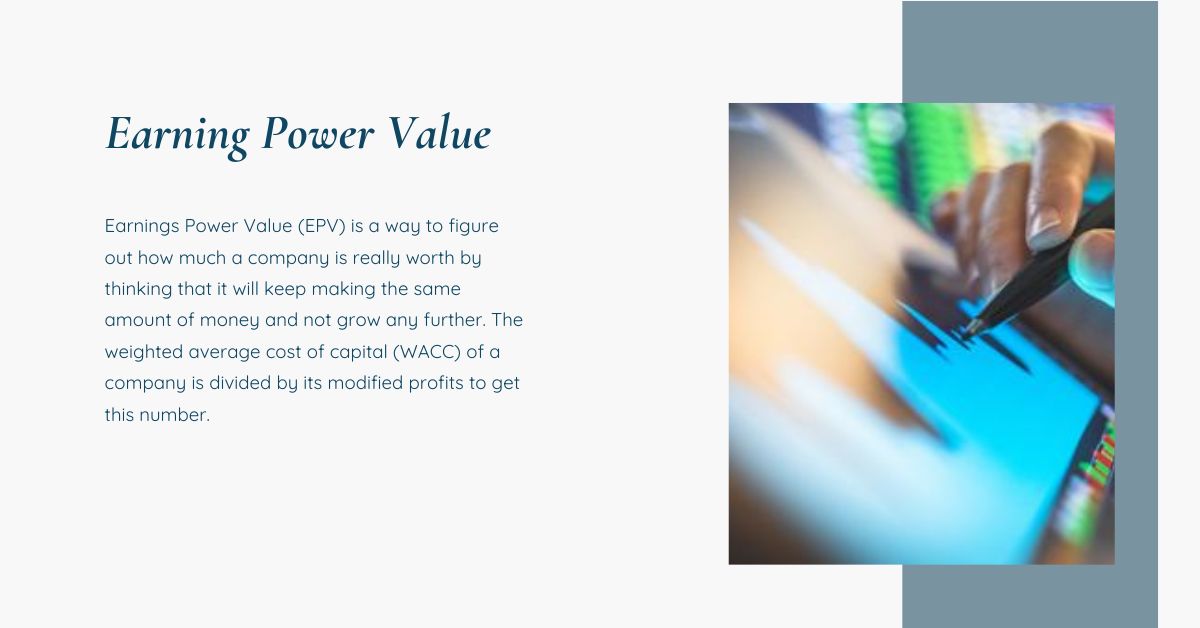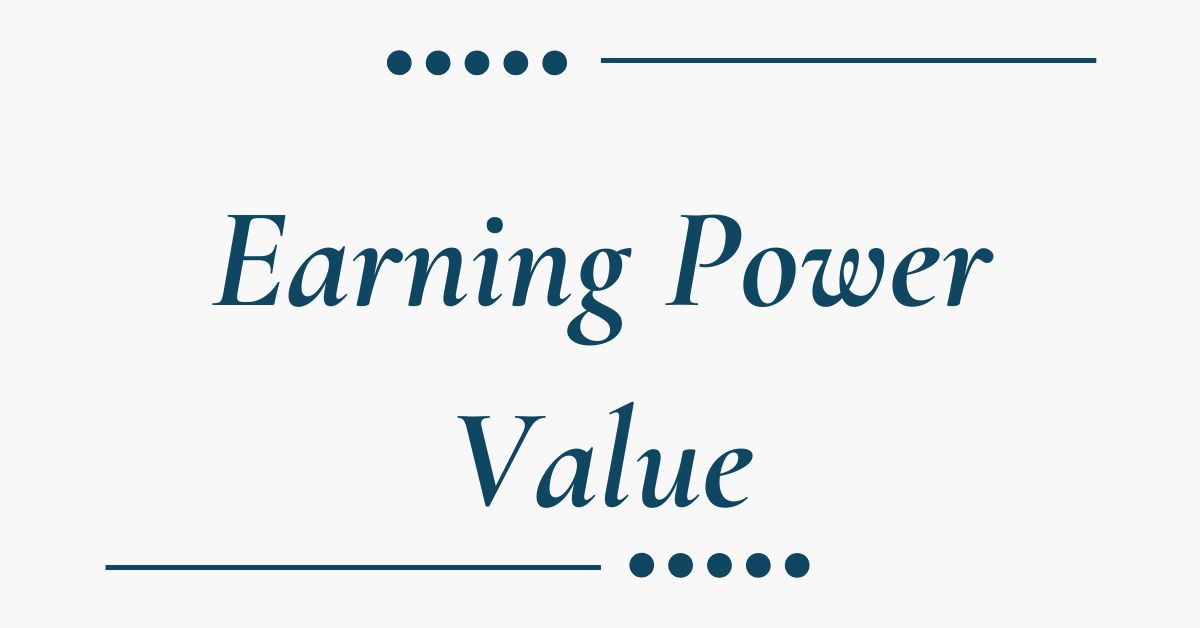There are a lot of different ways to value something, but the earnings power value formula is one that isn’t given enough credit. It helps us find companies that are cheap without having to guess as much as, say, the discounted cash flows.
Is the method for earnings power number correct? It’s too awful that it’s not. But it is another thing we can use to value things.
The earnings power value uses numbers from all three financial records to figure out how much a company is really worth. Growth is good; it’s the only way for businesses to get bigger.
We can use the earnings power value method to figure out how much a company is worth and keep our attention on the basics of the business.
What is Earning Power Value?

Earnings Power Value (EPV) is a way to figure out how much a company is really worth by thinking that it will keep making the same amount of money and not grow any further. The weighted average cost of capital (WACC) of a company is divided by its modified profits to get this number.
This method works especially well for figuring out how much an old company with steady income streams is worth. Even though the idea behind it is easy, there are several steps needed to correctly figure out WACC and EPV. Investors can tell if a stock is undervalued, overpriced, or properly priced by comparing the EPV to the market capitalization of the company.
Formula of Earning Power Value
The formula for Earnings Power Value (EPV) is:
EPV = Adjusted Earnings / WACC
Where:
- Adjusted Earnings: This is the company’s operating income (EBIT) adjusted for factors like non-recurring items, cyclical fluctuations, and accounting distortions. It represents the company’s sustainable earning power.
- WACC: This stands for the Weighted Average Cost of Capital. It’s the average rate a company pays to finance its assets.
If the company doesn’t grow, we can find the present value of its future cash flows by dividing its modified earnings by its WACC. The market valuation of the company is then compared to this number to see if the company is undervalued, overvalued, or priced properly.
How Does the Earnings Power Value Work?
Earnings Power Value (EPV) is a way to value a business that only looks at its current revenue and not its growth in the future. The value of a company is found by dividing its adjusted profits by its weighted average cost of capital (WACC). The company’s long-term earning power is shown by its adjusted earnings, which take out one-time things and changes in the business cycle.
This is the present value of the company’s future cash flows if it doesn’t grow. It is found by dividing these adjusted earnings by the WACC. The market valuation of the company can then be compared to this EPV to see if the company is undervalued, overpriced, or priced properly.
What Does Earning Power Mean in Money?
The ability of a person or a business to make money is called their “earning power.” A person’s chances depend on their skills, training, and how much the job market wants those skills. A better earning power means that you could make more money.
A company’s earning power depends on its business plan, where it stands in the market, how well it runs its operations, and how profitable it is overall. Strong earning power means that a company can regularly make money and keep running, which makes it appealing to investors.
What is the Earning Capacity Valuation?
Capacity to Earn The power of a business to make money in the future is used to figure out how much it is worth. It looks at things like the company’s past success, its place in the market, its competitive edge, and industry trends to figure out how much money it can make in the future.
By looking at these factors, experts can guess how much money will be made in the future and use the right discount rate to bring that amount back to its current value. This method of figuring out a company’s value is better for stable and reliable income streams than methods that depend a lot on predictions of future growth. This is because it gives a more accurate picture of the company’s value.

